Protective Design for Perfume Bottles
Discover the secrets of protective perfume bottle design. Learn how to balance durability, aesthetics, and sustainability for luxury fragrance packaging.
Summary
Protective Design for Perfume Bottles refers to the specialized packaging and design strategies implemented to safeguard fragile perfume bottles while enhancing their aesthetic appeal and functionality. As the global fragrance industry continues to thrive, with a market size projected to reach $54 billion by 2028, the importance of effective protective design has become increasingly significant, not only for preserving the integrity of the product but also for enhancing brand identity and consumer experience.
Historically, perfume bottles have evolved from simple containers made of materials like alabaster and ceramic in ancient civilizations to intricately designed glass vessels that reflect artistic trends and cultural values. The protective design of these bottles plays a critical role in preventing damage during production, transit, and consumer use, which is essential for maintaining quality and ensuring customer satisfaction. Various materials such as glass, plastic, and metal are utilized in the construction of both the bottles and their protective packaging, each offering distinct advantages and challenges in terms of durability and aesthetics.
Controversies surrounding protective design often center on the balance between sustainability and luxury. As consumer preferences shift towards eco-friendly practices, brands face the challenge of creating packaging that is both protective and environmentally responsible, leading to innovations in recyclable and refillable designs. Moreover, the quest for unique, visually striking packaging can sometimes compromise functional integrity, sparking debates within the industry regarding the priorities of design.
Overall, the protective design of perfume bottles is a multifaceted domain that intertwines artistry, engineering, and market demands, reflecting broader trends in consumer behavior and environmental consciousness. As the fragrance industry adapts to changing consumer expectations, the ongoing evolution of protective packaging will likely remain a pivotal aspect of its future development.
Table of Contents
History
Ancient Beginnings: The Origins of Perfume Bottles
The history of perfume and its containers dates back thousands of years, with some of the earliest known practices originating in ancient Egypt around 3000 BC. Egyptians crafted perfume bottles from materials such as alabaster and glass, often in forms resembling gods or animals, which signified the sacredness of perfume in their culture. In ancient Greece, between the 6th and 4th centuries BC, the use of ceramic flasks called aryballos or alabastron became common for storing oils and perfumes. These vessels were typically adorned with intricate paintings depicting warriors and mythological scenes, reflecting the cultural values of the time.
The Renaissance to the Industrial Revolution
After the fall of Rome, Europe entered a period often referred to as the Dark Ages, during which many advancements in the art of perfumery were neglected. However, significant progress was made by the Persian philosopher Ibn Sina (Avicenna), who lived from 980 to 1037 CE. He developed a distillation process for extracting floral essential oils, enhancing the quality of perfumes compared to previous methods that merely involved crushing ingredients and mixing them with oil. This technique not only improved perfume quality but also influenced later European practices. By the Renaissance, the craft of perfume making was flourishing again, with Europe seeing the emergence of finely crafted perfume bottles. The evolution of glassmaking techniques led to more elaborate designs, which became fashionable among the wealthy.
The 18th and 19th Centuries: Mass Production and Aesthetic Trends
During the 18th century, the design of perfume bottles was heavily influenced by the artistic movements of the time, including Neoclassicism and Rococo. Bottles were made from various materials such as glass and porcelain and were often decorated in accordance with contemporary aesthetic trends. The rise of the European middle class during this period also made perfume more accessible, resulting in an increase in commercially produced bottles.
The Industrial Revolution in the 19th century transformed the production of perfume bottles from a craft-based endeavor into a major industry. Advances in manufacturing allowed for mass production, making these luxury items available to a broader audience. This era also saw the emergence of unique design elements, with bottles often being treated as pieces of art in their own right, reflecting the tastes and styles of the time.
Modern Innovations and Cultural Influences
The 20th century marked a significant turning point in the design of perfume bottles, as technology continued to evolve and cultural influences became more pronounced. Modern designers began to fuse elements from various cultures, resulting in hybrid designs that appealed to an international market. Contemporary perfume bottles are not only functional but also serve as a reflection of brand identity, with unique shapes and decorations telling the story of the fragrance they contain. As sustainability became a growing concern, the perfume industry also adapted, introducing refillable designs and bottles made from recycled materials, aligning with contemporary values regarding environmental responsibility. Today, the history of perfume bottles is seen as a narrative that intertwines artistry, technology, and cultural evolution, reflecting changing societal values and preferences throughout the centuries.
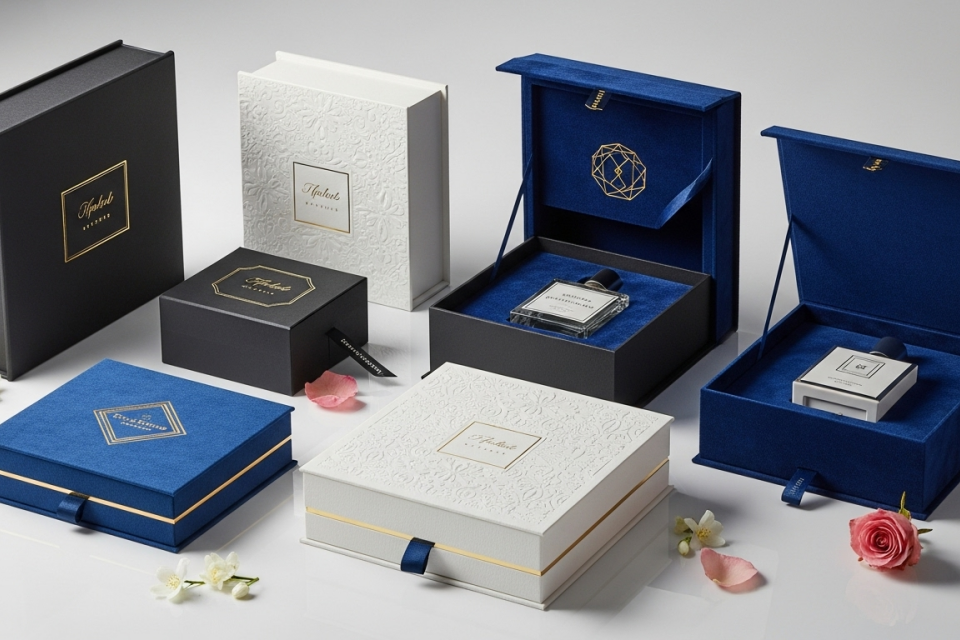
Materials Used
The selection of materials for perfume bottles and their caps plays a crucial role in both the aesthetics and functionality of the packaging. Common materials utilized include glass, plastic, metal, cardboard, and other innovative options.
Glass
Glass is often regarded as the preferred material for high-end perfume packaging due to its luxurious appearance and inert properties. It provides a stable, non-reactive environment that does not alter the scent of the fragrance, making it an ideal choice for preserving the integrity of the perfume. Glass also offers significant environmental benefits, as it is fully recyclable and can be reused without degrading its quality. Despite its higher production costs and fragility, the transparent nature of glass allows consumers to appreciate the color and clarity of the fragrance, enhancing the luxury perception.
Plastic
Plastic is widely used in the perfume industry due to its cost-effectiveness and design flexibility. It is more durable than glass, making it suitable for mass-market products where cost is a significant consideration. However, plastic lacks the luxurious feel of glass and can interact with fragrances, potentially altering their scent. Brands must weigh the benefits of plastic against consumer expectations for elegance and environmental impact when selecting materials.
Metal
Metal components, often used for caps, provide a premium feel and can be engineered into intricate designs. Common metals include aluminum, zinc alloy, and brass, which contribute to the luxurious perception of the packaging. Surface treatments such as anodizing and plating can enhance the appearance and durability of metal caps, adding a sophisticated touch to the overall design. Additionally, metal is effective at protecting the contents from damage, making it a practical choice for travel-sized perfumes.
Other Materials
Ceramic and laminated materials also find use in the perfume packaging sector, with ceramic providing a vintage aesthetic and good light-blocking capabilities, although at a higher cost and weight. Laminated materials can offer a luxurious feel while being more environmentally friendly than traditional plastics.
Sustainable Materials
Increasingly, brands are turning to sustainable materials as part of their commitment to environmental responsibility. While initial costs may be higher, the long-term economic benefits, such as reduced energy consumption during production, can offset these expenses. By incorporating recyclable materials, companies not only fulfill consumer demand for eco-friendly practices but also enhance their brand value and market competitiveness.
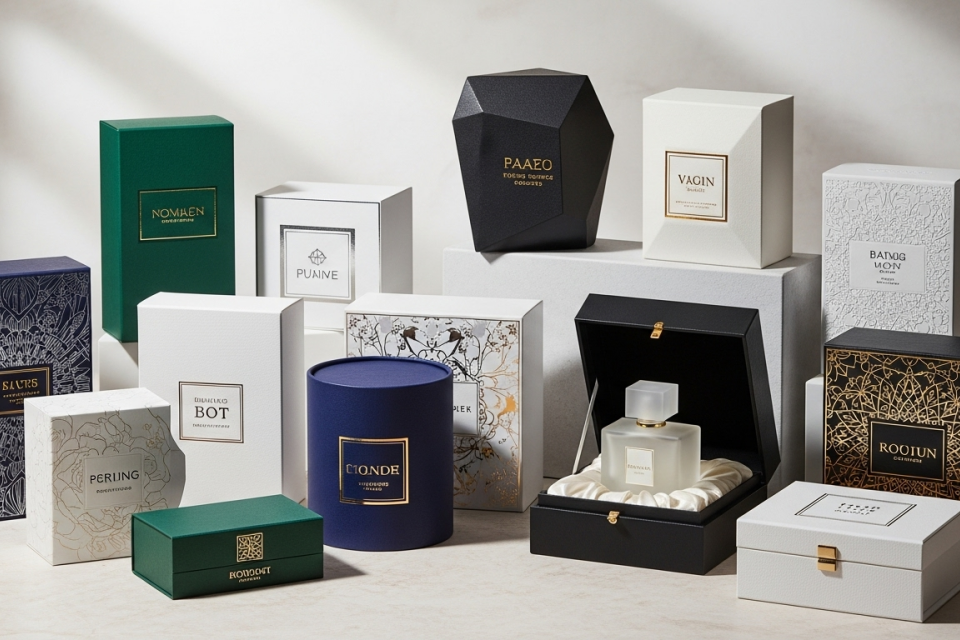
Design Features
Aesthetic and Functional Elements
The design of perfume bottles encompasses both aesthetic appeal and functional attributes, ensuring a balance between beauty and usability. High-end customization techniques, such as UV printing, engraving, hot stamping, and laser etching, not only add sophistication but also allow brands to incorporate their identity into the packaging, enhancing the overall consumer experience. Various lid designs, from electroplated metallic coatings to wood-grain textures, contribute to the visual allure, while features like magnetic closures or snap-fit caps serve practical purposes, facilitating ease of use.
Shape and Body Design
The body shape of a perfume bottle can evoke different emotions and associations, impacting consumer perception. For example, rounded bottles may convey femininity, while angular shapes suggest strength and modernity. Unique sculptural designs, such as those mimicking natural elements like seashells or waves, further enhance the connection between the product and its scent or brand identity. Additionally, the incorporation of various textures and finishes, including frosted or etched glass, creates tactile interest and can set a brand apart on retail shelves.
Cap and Sprayer Integration
The cap of a perfume bottle is integral to its overall design, not just for aesthetic cohesion but also for functionality. Caps must protect the spray nozzle, preventing accidental discharges and ensuring precise application. The design of the sprayer itself can vary, with options including pump sprays for a fine mist or squeeze bulbs for controlled application, catering to diverse consumer preferences. This careful consideration of the cap and sprayer enhances the user experience and reinforces the brand’s commitment to quality.
Base Design Considerations
The base of a perfume bottle, often overlooked, plays a crucial role in its stability and aesthetics. Designers may opt for flat, wide bases for stability or unique shapes that add character. Features like engraved patterns or subtle curves at the heel of the bottle can showcase creativity, while ensuring the bottle remains functional and easy to handle. This attention to detail in the base design contributes to the overall impression of the perfume bottle as a high-quality product.
Sustainability and Cost-Effectiveness
In contemporary design practices, sustainability is increasingly becoming a priority. Brands are integrating recyclable materials into their packaging to meet consumer expectations for environmental responsibility. However, achieving this balance between aesthetic design and cost-effectiveness remains a challenge. Companies often explore options such as digital printing for complex artwork to maintain high standards without incurring prohibitive costs. This strategic approach to design not only enhances brand identity but also ensures compliance with modern consumer values.
Iterative Design Process
The design development journey involves rigorous refinement and testing phases. Feedback from prototype testing allows designers to evaluate aesthetics, functionality, and usability, ensuring the final product aligns with the brand’s vision and practical requirements. This iterative process streamlines the development timeline and enhances the quality of the final product, reinforcing the importance of thoughtful design in perfume bottle manufacturing.
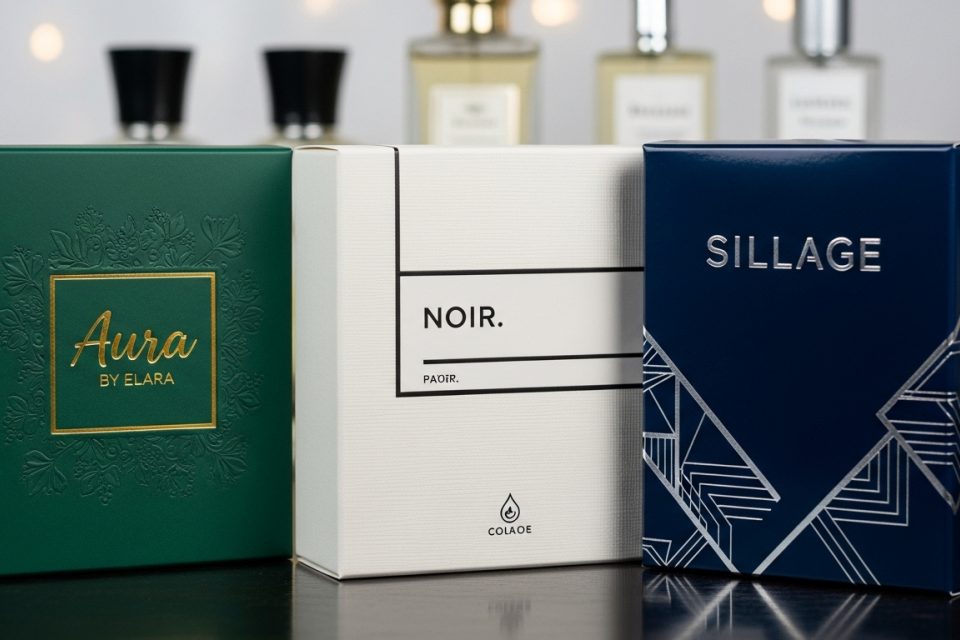
Safety Standards and Regulations
Adhering to safety and durability standards is essential for perfume packaging to ensure product integrity. Packaging materials must be of high quality and non-toxic, ensuring safety for both consumers and the environment. Rigorous testing processes, including drop tests, assess the packaging’s ability to withstand impacts and vibrations during transit. Additionally, moisture and temperature resistance tests are crucial to ensure that the packaging protects the perfume from environmental factors. Compliance with industry standards, such as ISO and ASTM, guarantees reliable protection, maintaining the perfume’s quality from production to the end user.
The manufacturing and assembly processes for perfume packaging involve precise steps to ensure quality and consistency. The process begins with die-cutting materials into specific shapes and sizes, followed by applying adhesives to assemble the box components. Automated machinery enhances accuracy and efficiency, while manual assembly may be employed for intricate designs or finishing touches. Quality control checks are conducted at each stage to detect and correct defects, ensuring that the finished boxes meet design specifications and durability standards.
Prototyping and testing are critical steps in the development of perfume packaging. Initial prototypes are created using selected materials and design specifications, which then undergo a series of tests to evaluate their performance and durability. Feedback from these tests is instrumental in refining the design and materials, ensuring that the final product meets all safety and quality standards. Moreover, brands are increasingly moving towards sustainable packaging solutions, using recyclable materials to appeal to environmentally conscious consumers and address regulatory pressures regarding hazardous materials and chemicals.
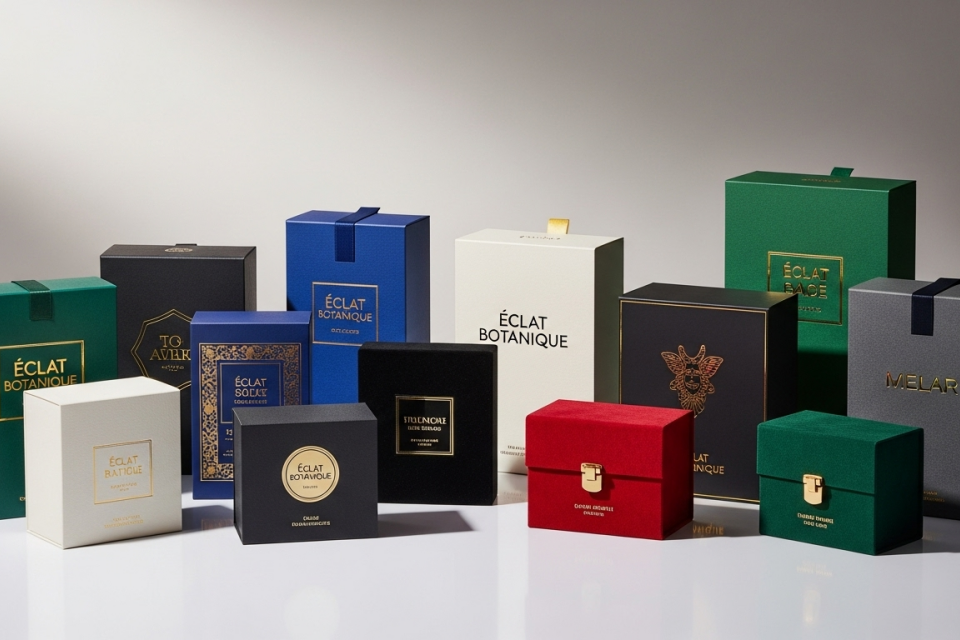
Innovations in Design
Technological Advances in Perfume Bottle Design
Recent advancements in technology have significantly transformed the perfume bottle design landscape, enabling greater complexity and creativity in bottle shapes and functionalities. The introduction of 3D printing has particularly revolutionized the manufacturing process, allowing designers to produce intricate geometric patterns and unusual bottle shapes that were previously cost-prohibitive. This technology not only facilitates the creation of unique designs but also reduces production costs, making advanced designs more accessible to brands looking for distinctive packaging options.
Sustainable and Eco-Friendly Approaches
Sustainability has emerged as a crucial consideration in the design of perfume bottles. The fragrance industry increasingly focuses on reducing its environmental impact, prompting designers to explore eco-friendly materials such as recyclable glass and biodegradable plastics. Additionally, innovations in smart packaging have begun to provide consumers with information about the product’s sustainability credentials, further enhancing transparency in the market. Refillable perfume bottles are also gaining traction, allowing consumers to purchase perfumes once and simply buy refills, thus reducing waste and fostering a stronger connection between the brand and the consumer.
Aesthetic and Functional Innovations
Modern perfume bottle designs are not solely focused on aesthetics; they also prioritize creating an engaging consumer experience. Interactive elements, such as touch-sensitive lids that light up or change color, add a layer of magic to the product. The market has also seen a shift towards artistic and cultural significance in bottle designs, with many bottles being viewed as collectible works of art. These innovations not only enhance the product’s visual appeal but also cater to consumer desires for unique and memorable packaging.
Collaboration and Market Research
To leverage technological innovation effectively, brands are increasingly investing in research and development. Collaborating with experts, universities, and research institutions can lead to groundbreaking discoveries in design and functionality. Furthermore, conducting thorough market research is essential for understanding consumer preferences and behaviors, which can inform design decisions and ensure that packaging resonates with the target audience.
The Role of Materials in Design Evolution
The evolution of materials has also played a pivotal role in perfume bottle design. Manufacturers are now utilizing innovative materials, including those derived from agricultural waste or seaweed, as well as offering closures made from recyclable materials. This focus on sustainable materials is crucial as consumers demand more environmentally responsible options. As the industry moves towards creating a circular economy, the design of packaging that is reusable, recyclable, or compostable will become increasingly important. Through these innovations, the perfume bottle design landscape is not only evolving aesthetically but also adapting to meet the environmental and experiential expectations of contemporary consumers.
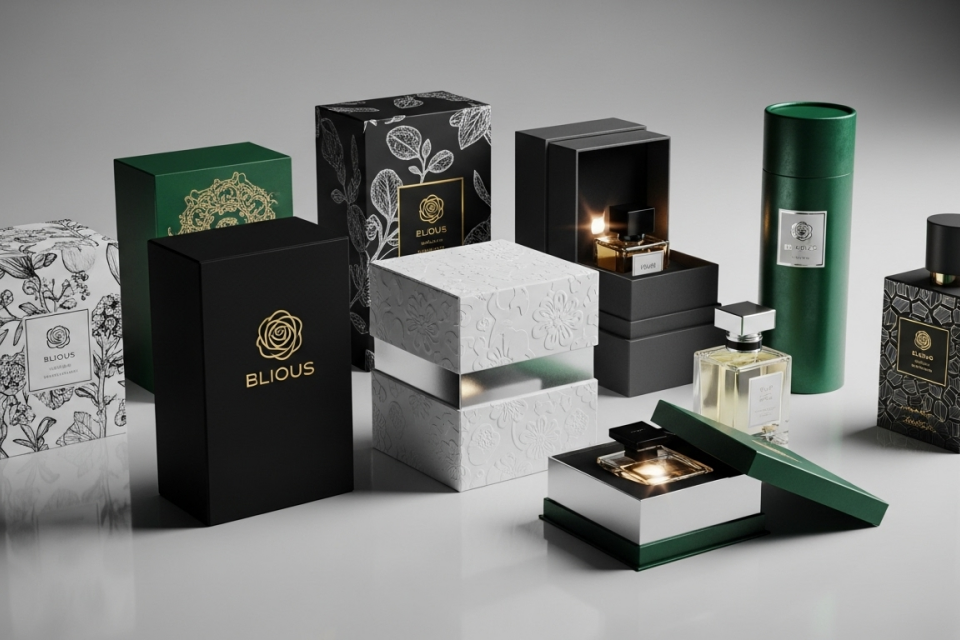
Case Studies
Sustainable Packaging Innovations
Several brands in the perfume industry have taken significant strides towards sustainable packaging designs, illustrating a growing commitment to eco-conscious practices. For example, MAISON 21G has emerged as a leader in eco-friendly perfume innovation, focusing on refillable and recyclable glass bottles. Their products are designed to minimize environmental impact while maintaining luxury standards, reflecting a blend of sustainability and elegance. Similarly, Chanel has initiated the “Chanel No. 5 The Bottle” campaign, which emphasizes the use of refillable glass containers and responsible sourcing of ingredients, showcasing a dual commitment to sustainability and heritage.
Unique Design Elements
Perfume bottles have transcended their original function to become artistic expressions, reflecting cultural influences and consumer preferences. Brands like Moschino and Jean Paul Gaultier are noted for their avant-garde bottle designs that challenge conventional aesthetics and cater to a younger, adventurous demographic. These bottles often feature quirky, asymmetrical shapes that not only stand out on the shelf but also resonate with consumers seeking individuality and a personal connection to their fragrance.
Technology Integration
The integration of technology into perfume bottle design is another notable trend, with brands exploring smart features to enhance user experience. This includes sophisticated spray measurement systems and app-linked functionalities for scent tracking. By incorporating technology, brands are able to offer modern consumers tailored experiences that align with their digital lifestyles, thereby creating a stronger emotional bond between the product and its user.
Cost Management Strategies
As companies strive to innovate in packaging design, managing costs remains a significant challenge. Some brands are turning to digital printing techniques for intricate artwork, which reduces the cost associated with complex designs without compromising quality. Moreover, the rise of e-commerce necessitates a consistent brand identity across various platforms, prompting brands to maintain cohesive design elements while ensuring compliance with legal packaging requirements. This consistency not only promotes brand loyalty but also meets consumer expectations for quality and sustainability.
Examples of Consumer Engagement
Conscious consumerism is becoming increasingly important, with brands encouraging customers to engage in sustainable practices. For instance, Ted Green emphasizes eco-friendly cultivation and zero-waste innovations, while brands like Diptyque focus on sustainably sourced raw materials and environmentally friendly packaging. By promoting recycling programs and offering incentives, these companies are not just selling products but are also fostering a community that values sustainability and responsible consumption.
Challenges in Protective Design
The design of protective packaging for perfume bottles presents numerous challenges that require careful consideration of both functionality and aesthetics. One of the primary challenges is ensuring that the packaging provides robust protection while maintaining an appealing appearance. High-quality materials such as rigid board, corrugated cardboard, and foam inserts are essential for safeguarding delicate glass bottles against impacts and vibrations during transit and handling. However, balancing sturdiness with stylish elements can complicate the design process, as brands aim to create packaging that is not only functional but also visually attractive.
Another significant challenge in protective design is the need for absolute quality control during manufacturing. Each bottle must be meticulously checked for defects such as cracks, bubbles, and varying thicknesses to ensure that it meets the required standards, which is crucial for maintaining a brand’s reputation and delivering a perfect final product. Additionally, the incorporation of innovative packaging techniques, such as personalized engraving or augmented reality interactions, adds layers of complexity to the design process, as brands strive to enhance user engagement while ensuring product safety.
Sustainability is also a growing concern in the perfume industry, as modern consumers increasingly seek eco-friendly packaging solutions. This shift requires brands to rethink traditional materials and methods, opting for recyclable or refillable designs without compromising on luxury or aesthetic appeal. The challenge lies in developing sustainable packaging that also conveys a sense of opulence, as brands must meet the dual demands of environmental responsibility and consumer expectations for high-end products.
Lastly, as the fragrance market evolves with frequent new product launches, brands face the challenge of standing out in a crowded marketplace. Packaging serves as a critical element of this differentiation, often acting as the “silent salesman” that influences purchasing decisions. Therefore, designing unique, memorable, and effective packaging that captures consumer attention while ensuring the protection of delicate perfume bottles remains a complex task for manufacturers.
